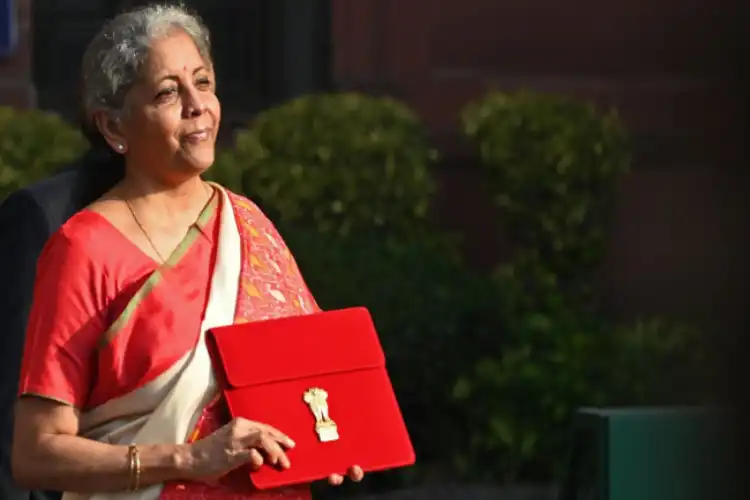
 Sushma Ramachandran
Sushma Ramachandran
The past year has been a roller coaster in many ways. It began with the third wave of the pandemic in a milder form with the Omicron variant, raising hopes that the world would get back to normalcy in a short time. While the virus did recede in most parts of the world, these hopes were dashed as other geopolitical developments had an adverse impact. The Russian invasion of Ukraine at the end of February had ripple effects globally and virtually no country has been spared from dealing with its consequences.
On the economic front, the immediate impact was a surge in energy prices. Crude oil spurted to over 140 dollars per barrel from earlier levels of around 80 to 90 dollars. Fortunately, prices soon moderated but oil markets continued to hover in the region of 100 dollars per barrel for many months. The next blip on the horizon was the disruption of global supply chains since major metals and commodity producers Russia and Ukraine were suddenly out of the market.
Ukraine is also the world’s biggest exporter of sunflower oil and along with Russia accounts for about 30 percent of global wheat exports. The conflict thus brought hardship to many countries whether in the form of food shortages, high energy prices, or manufacturing curbs.
For India, the war upset all the carefully calibrated calculations made by government policymakers for the 2022-23 budget. Financial estimates had been made based on international oil markets remaining in a range of 75 to 80 dollars per barrel but instead, these ruled at an average of 100 dollars per barrel for most of the year. In addition, inflationary pressures increased on the economy owing to the impact of higher fuel and food prices.
The consumer price index touched 7.8 percent by April, forcing the Reserve Bank of India to abandon its accommodative monetary policy. It now had to focus on keeping inflation within the tolerance band of two to six percent. Moving in that direction, the central bank began a series of interest rate hikes to cool prices. It has so far raised rates four times during the year and achieved some measure of success with inflation having climbed down to 5.88 percent in November.
Overall growth expectations for the year have also been downgraded given the slowdown in manufacturing and other core economic sectors. From the original projection of 8 to 8.5 percent at the beginning of the current fiscal, even the government has lowered its target to 7 percent. It must be recalled that the economy contracted by 7.3 percent in 2020-21, followed by a rise of 8.7 percent in 2021-22. The setbacks in the current fiscal have largely been due to the impact of the external environment.
Growth projections for 2023 are in the range of 5 to 6 percent. Yet this is considered positive in contrast to worldwide growth which is expected to be only 1.8 percent. The fact is, India is set to be the fastest-growing major economy in the world. At the same time, geopolitical developments are constraining the pace of its post-pandemic recovery.
There has been an impact already on export growth. The record rise in merchandise exports during 2021-22 has slowed down in the current fiscal due to a fall in global demand. With import costs rising owing to hardening oil markets along with a depreciating rupee, the current account deficit is set to exceed three percent of GDP, compared to only 1.8 percent last year.
Against this backdrop, it is clear the rural masses in particular continue to face the long-term impact of the pandemic. It was in recognition of this fact that the free foodgrains scheme was extended till the end of December. It has now wisely been decided to conclude it but continue giving support to the needy by converting the National Food Security program into a free scheme. This will put a lesser burden on the exchequer while providing wide coverage to those at the bottom of the pyramid.
The year has ended with the news of Chanda and Deepak Kocchar being arrested along with corporate tycoon Venugopal Dhoot. It is unfortunate since the former ICICI Bank chief was seen as the torchbearer for an entire generation of women bankers who rose to the top echelons of the industry. Having said that, on the plus side, the glass ceiling is well and truly broken in the banking sector and there continues to be a host of highly competent women at the helm of the industry. The silver lining for banking is that it has been restored to better health with nonperforming assets having fallen to 6 percent in 2022 from 11.5 percent in 2018.
The other big news at the end of the year is India taking over the presidency of the G20. This is a grouping that comprises 85 percent of the world’s GDP and 75 percent of global trade. As such it is one of the most powerful international forums. The agenda for the year is expected to be on developmental goals especially expanding the digital economy, improving health infrastructure, and putting a focus on women’s empowerment. It will be a challenging role for the leader of the grouping to bring together countries that are currently antagonistic to each other. The theme for the presidency, “Vasudhaiva Kutumbakam” ( the world is one family), sets the tone even as the Ukraine conflict continues.
ALSO READ: Heartwarming stories of inclusive bonds of Indians
Thus 2022 has been a mixed bag for this country with the revival in growth constrained by adverse global headwinds. The next year is likely to be equally challenging and policymakers must have a flexible approach to deal with the fast-changing geopolitical scenario.
